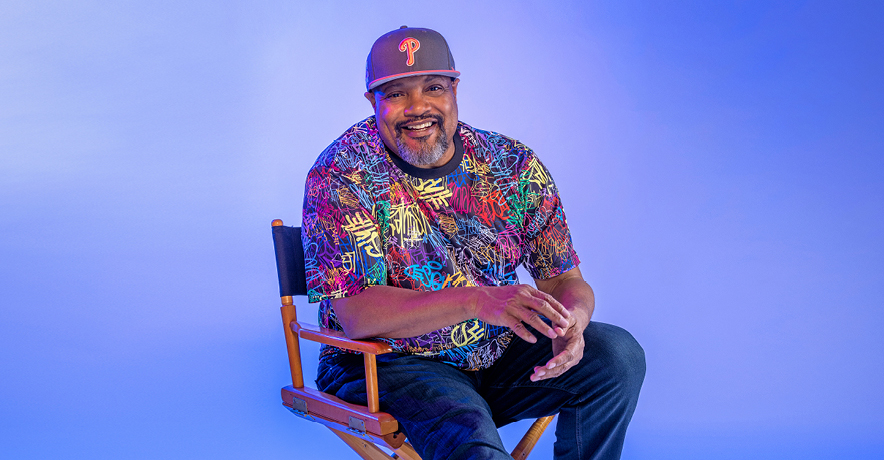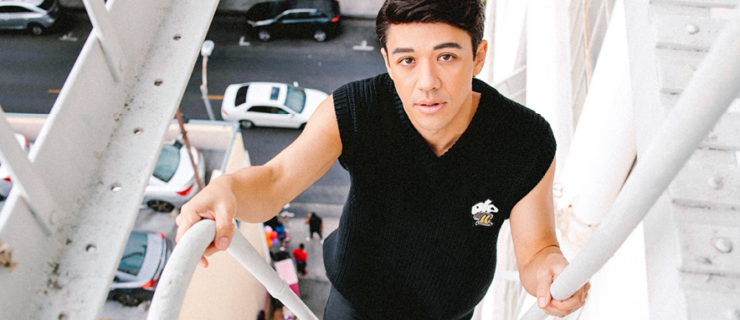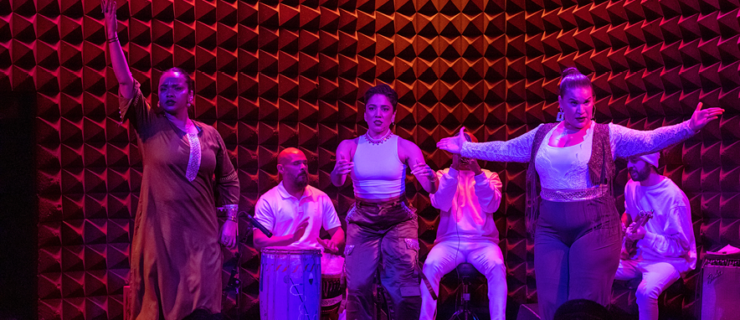Rennie Harris Bridges the Past and Future
The first time Rennie Harris and his company, Rennie Harris Puremovement American Street Dance Theater (RHPM), performed on a concert dance stage, the audience didn’t cheer. Discouraged, Harris and his dancers—young men prone, admittedly, to bouts of hypermasculinity—began arguing: “We’ve got to dance harder,” “You should’ve come to rehearsal,” “Man, you suck.” By the end of the show, their whispered insults had escalated into plans for a physical fight. But before they could take the dispute outside, they needed to bow. To their surprise, the audience burst into a standing ovation.
“This was a complete culture shock to us,” Harris said in a recounting of the experience at a Stanford University talk. Accustomed to the audible energy exchanged at cyphers and other social dance settings, the cast had been unaware that traditional theatergoers remain quiet to be polite. Bridging that divide between the cultures of street dance and concert dance has since become a defining element of Harris’ influential career.
Harris founded RHPM in Philadelphia in 1992, and while it’s often labeled a hip-hop company, the choreography largely channels other street dance forms. Harris distinguishes between the two, defining hip-hop dance as nationwide social dances anyone can do—like the cabbage patch, soldier boy or nae nae—and street dance as city-specific genres with their own techniques, like house, popping, locking and breaking.
“I used to believe ‘street’ gave it a lower connotation. Then I realized it was a lower thing according to white dance and Western culture standards. However, it’s not coming from that. Because of its Africanness, it stands alone,” clarifies Harris. “ ‘Street’ is a slang term for community. It’s not the literal street.”
Though hip-hop music rarely appears in Harris’ work, it grounds his company culturally. True to hip hop’s three unspoken laws—individuality, creativity and innovation—Harris pushes into new territory. After touring internationally throughout the 1980s with music artists such as Salt-N-Pepa, Run-DMC and LL Cool J, Harris turned to theater, feeling as though “I had already done it and was retiring,” he says. “My mindset was ‘I’m going to make what I make, and either you like it or you don’t.’ ” The resulting works precipitated the invention of “street dance theater,” and their influence can be seen in many of the hip-hop and street dance productions on stage and screen today.
Fusing street-dance movement vocabulary with original music and writing, Harris developed narrative-driven pieces exploring racism, sexism and other cultural issues. Though his work was—and, disconcertingly, still is—sometimes met with an audience reception that questions the rigor of street dance and the authenticity of staged hip hop, it broke the barrier for new African diasporic dance forms to appear in traditional performing arts establishments. “In those days, if you saw a dance piece, it was ballet or contemporary,” says James “Cricket” Colter, an RHPM founding member. “This was our dance, something from the Black community that was high art, just like ballet, being used to tell a powerful story.”

For his part, Harris feared the work was getting attention for the wrong reasons. Playwright and stage director Ozzie Jones recalls, “At the time, he was frustrated. The men are all really beautiful and in great shape. Because it’s a lot of breakdance movement, like flying through the air, he was starting to feel like they were objectified strippers.” Harris enlisted Jones, along with composer Darrin Ross, to collaborate on his first evening-length work, Rome & Jewels. With this hip-hop adaptation of Shakespeare’s Romeo and Juliet, which began rehearsals in 1997, Harris set out to prove RHPM was “not just a rinky-dink company doing cute work,” he says.
To get invited into the company, Rodney Mason danced his way through Philadelphia’s nightclubs, battling against RHPM members. After he joined in 1996, he remained shy, quietly learning from the other dancers, until Harris announced his plan to create Rome & Jewels. An experienced actor and lifelong Shakespeare fan, Mason stood up and shouted: “Yo, Rome, the hate that I have for you can afford no better term than this: Thou art a villain—so what’s up?”
Though Mason had recited a variation on Tybalt’s lines, he emerged as the production’s Romeo, or Rome. Juliet, or Jewels, was harder to cast; while RHPM is diverse today, at the time it was predominantly men. As the search for Jewels continued, Mason began rehearsing with an imaginary woman.
“He was doing it with so much detail that you felt like you could see her,” says Jones. “It ended up being a brilliant expansion of Rennie’s idea of displaying this macho, hip-hop, gang culture and the sexism that is inherent in that. Because these young wolves are out in the world by themselves, their idea of women, love, honor and justice is not really based on much outside their imagination.”
“I didn’t know until later that somebody saw what I was doing,” says Mason. “If I would’ve known, I wouldn’t have been so free, but I guess that was the whole point.”
Harris rarely prepares choreography on his own beforehand, preferring to workshop phrases with the dancers in the room. “He likes you to bring your own individuality to it, so it doesn’t look overly rehearsed,” says current RHPM member Joshua Culbreath. “He tries to coax out the best in everyone’s personality by giving solos or having parts of the choreography be from a specific person’s movement technique.”
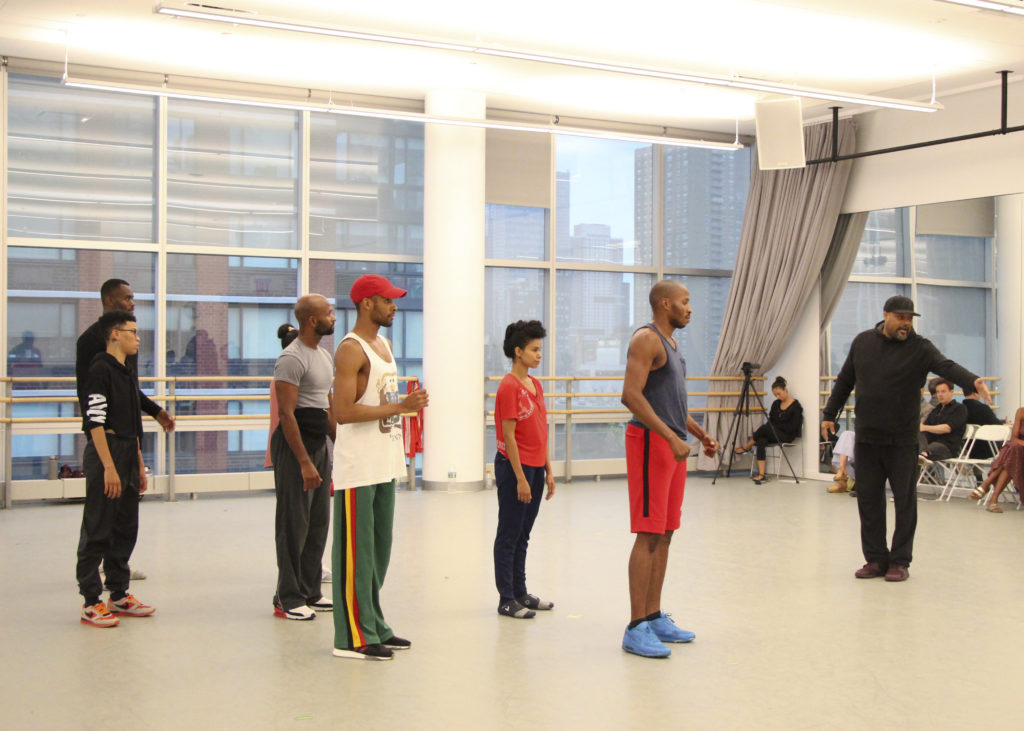
Since RHPM productions often feature concrete storylines, the dancers’ unique styles also inform their acting. “Character development gives your dancing so much more texture,” says current RHPM member Emily Pietruszka. “You get to bring something to life rather than just do a bunch of moves someone told you to do. There’s a difference between putting street dance movement onstage and really telling a story through street dance that people can find themselves in.”
While theatrical hip hop may not feel groundbreaking in a post-Hamilton world, Rome & Jewels was the first production of its kind. “Rennie was thinking far out,” says Raphael Xavier, a renowned dancemaker and educator, as well as a former RHPM member. “A lot of the young companies coming up now are utilizing his blueprint.” When Rome & Jewels premiered in 2000, it received critical acclaim and won three Bessies, and in 2008, Harris won the William Shakespeare Award for Classical Theatre. This year, to kick off celebrating its 30th anniversary, RHPM will remount the production with many of the original cast members. The revival premieres in Philadelphia this month before touring to Boston, The Joyce Theater in New York City and Providence.
For Harris, dance was “cultural, so we don’t look at it as something extracurricular or outside the norm,” he says. Growing up in an African American community in North Philadelphia, he first learned a style unique to the city called GQ, followed by popping, locking and breaking. He performed these dances with a neighborhood crew called the Scanner Boys, at venues like the local roller-skating rink and train station.
Joan Myers Brown, founder of Philadanco! and the International Association of Blacks in Dance (IABD), remembers driving her two daughters to watch these performances. “When those kids first started doing it, people would say, ‘Get those kids and their cardboard boxes off the street corner,’ ” she says. Then, “the times caught up with Rennie.”
Years later, Brown asked RHPM to perform at the 1995 IABD Festival in Philadelphia, where they impressed legendary African dance practitioner Baba Chuck Davis, who invited RHPM to tour nationally with his festival, DanceAfrica. Gaining visibility and momentum, RHPM was soon touring its own repertory internationally. Meanwhile, Harris began receiving choreographic opportunities from other companies, including Alvin Ailey American Dance Theater.
“When you think of street dance and hip hop, you’re really talking about our history,” says Ailey artistic director Robert Battle, who has commissioned Harris for three works, including the company’s 60th anniversary and its first full-length, two-act production, Lazarus. “Rennie takes us back to the origins, being a celebration of life in and of itself, and I believe that’s what Alvin Ailey did in his work, not using street dance per se, but in that way that he was able to utilize modern dance and make it accessible,” says Battle.
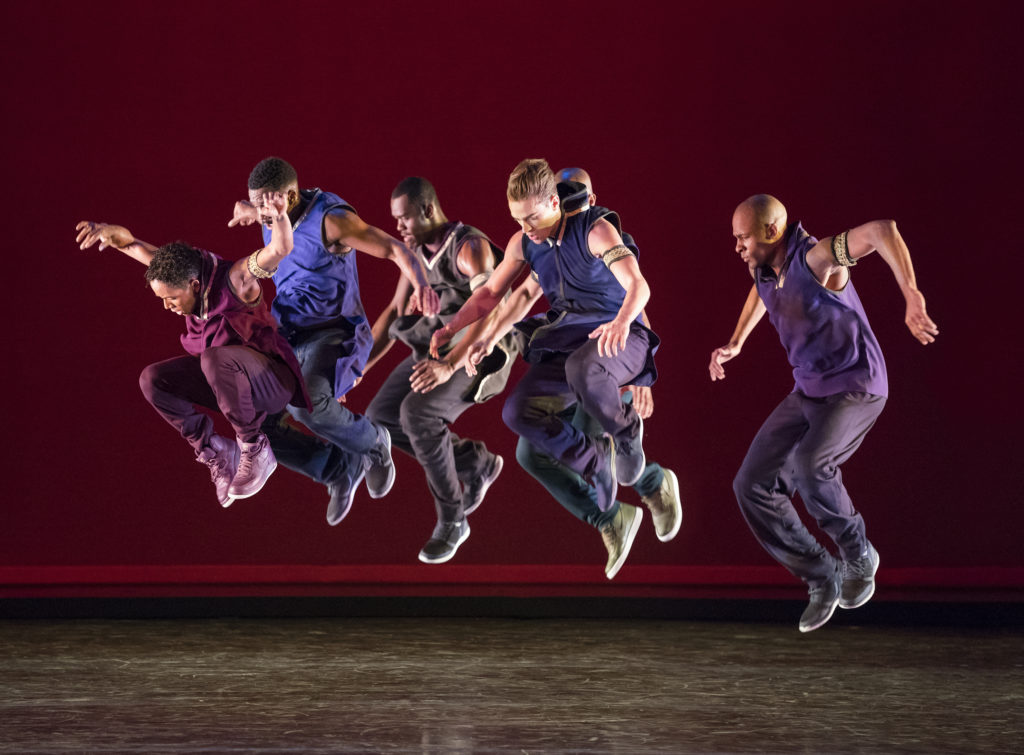
That said, with hip hop getting increasingly commercialized and its progenitors growing older, preserving its origins has become urgent. “There aren’t that many authentic voices that didn’t learn the culture but lived the culture,” says leading hip-hop practitioner Emilio “Buddha Stretch” Austin Jr., who says that Harris “has been part of the culture for 40 of its 50 years in existence.”
To assist Harris in codifying his movement practice and cultural knowledge, the Mellon Foundation granted RHPM $1 million, to be awarded over the next three years. Though gifted in time for the company’s 30th anniversary, “it’s long overdue,” says Emil Kang, the foundation’s program director for arts and culture. “Not only is he making remarkable work, but he also holds so much history and culture. We’re really trying to help him build out synergies between resourcing work for his company and creating a pedagogy that contextualizes all those factors.”
Educating artists, critics and audiences about hip hop’s roots has been a major motivation in Harris’ career. In Philadelphia, he organizes Illadelph Legends, the first street dance festival of its kind. Begun in 1997 to provide hip-hop pioneers, many of whom were no longer active in the industry, with a platform for sharing their knowledge, it’s now an annual weeklong intensive that features both established and emerging street dance icons from across the globe.
And as an artist in residence at the University of Colorado, Boulder, with honorary doctorates from Bates College and Chicago’s Columbia College, Harris has helped shape hip hop in higher education. He recently founded Rennie Harris University to “lay down the foundation of hip-hop culture and help people create a curriculum to teach responsibly and respectfully,” he says. The certification program aims to empower the next generation of dancers to truly advance—and not merely appropriate—the art form by using it as a medium for telling personal stories.
“You’re making it more authentic by bringing your culture to it,” he says. “That’s what hip hop has always been about: your own individual take—your own individuality, creativity and innovation.”
